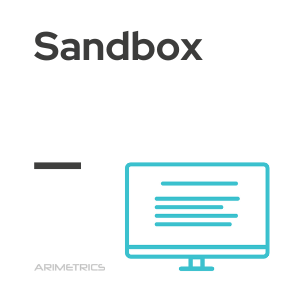 Definition:
Definition:
The Google Sandbox is a Google-related term that describes an evaluation period for newly created web pages. During this time, Google performs a detailed analysis to determine the validity and proper positioning of these pages. It is considered a sort of “quarantine” in which the quality of the content and the implementation of SEO practices are evaluated.
The Sandbox acts as a filter that can affect websites suspected of using abusive SEO techniques. It aims to ensure that the content is of high quality and that no spamming practices or other actions harmful to users are employed. This filter can hinder a website’s ranking in search results, resulting in a temporary drop in ranking, which can last from 3 to 6 months, or even up to a year in some cases.
Does the Sandbox exist?
The concept of Google Sandbox has been the subject of debate among SEO experts for some time now, mainly because Google has never officially confirmed its existence. This lack of confirmation makes it complicated to identify whether the observed effects on a website’s ranking are actually caused by a Sandbox or whether they are the result of other algorithmic factors. Despite the uncertainty, many SEO professionals believe in the existence of a mechanism similar to the Sandbox, based on certain observed patterns and behaviors:
- Differences in search results: Some new sites experience a significant discrepancy in search positions when comparing normal results with specific searches such as “allinanchor:keyword”. If the normal search shows a significantly lower position, it could be indicative of a Sandbox effect.
- Sudden drop in ranking: It is common for new websites to see an abrupt drop in ranking shortly after launch. This phenomenon could be interpreted as a sign that the site is undergoing a period of evaluation.
- Indexing without visibility: A site may be indexed by Google but not appear in normal search results. This could suggest that the site is in a prolonged evaluation status.
In essence, the so-called Sandbox could be a measure to ensure that new websites do not use blackhat SEO tactics to quickly gain high rankings. By implementing an evaluation period, Google can ensure that only sites that offer relevant content and comply with SEO best practices rank well in the long run. Regardless of the official existence of the Sandbox, what is clear is that new websites should focus on building a solid foundation of quality content and good SEO practices to get through any potential evaluation period and improve their search engine visibility.
What the Sandbox is for
We can say that the Sandbox is a way to ensure that the user experience is the best possible. It is a way to reward those portals or websites that have done things well and really deserve it. Thousands of new websites are created throughout the day and many of them can be totally detrimental to the user experience. The aim is that sites that do not offer quality appear later in the search results or not at all.
How to position yourself to avoid the Sandbox
We cannot forget that SEO requires time to have positive effects. To this end, it is important to consider the following aspects:
- Readability: Create a website that is clear and easy to read for both users and search engines, using appropriate tags and relevant multimedia content.
- Content: Generate unique and high quality content, updating it regularly to build authority.
- Backlinks: Obtain quality links from sites with high domain authority.
- Indexability: Ensure that the site is easily crawlable by search engines by reviewing the sitemap, navigation and links.
- Keywords: Use keywords strategically, avoiding their excessive use, and consider the use of long tail keywords and variations in anchor links.
